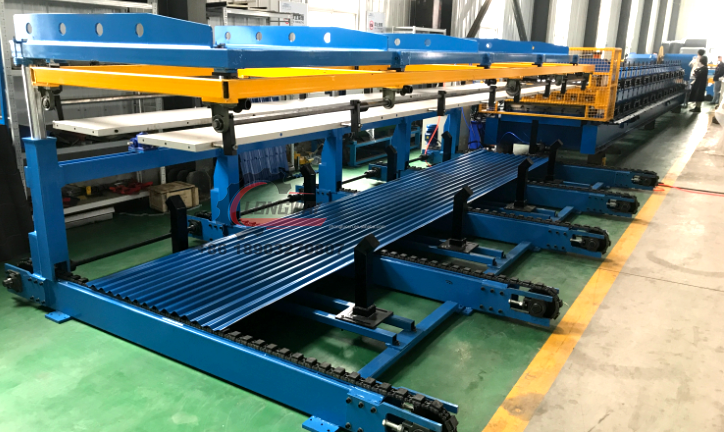roll forming aluminum
Understanding Roll Forming of Aluminum
Roll forming is a highly efficient and versatile manufacturing process used to shape metal into specific profiles. Among the various metals that can be shaped using this technique, aluminum is particularly favored due to its lightweight properties, resistance to corrosion, and excellent strength-to-weight ratio. The roll forming process is especially beneficial for producing long lengths of uniform and complex cross-sectional shapes that are ideal for various applications, from construction to automotive industries.
The roll forming process begins with a flat aluminum sheet or coil, which is fed through a series of rollers. These rollers are configured to gradually bend and shape the aluminum into the desired profile. The process is continuous, meaning that it can produce an extensive length of a defined profile, which reduces the material waste significantly compared to other forming methods. This efficiency makes it an attractive option for manufacturers looking to optimize production and reduce costs.
One of the key advantages of roll forming aluminum is its ability to maintain tight tolerances. Because the process is continuous and controlled, manufacturers can achieve consistent and precise dimensions across long lengths of material. This is particularly important in industries where exact specifications are necessary, such as in the manufacture of aluminum frames for windows, doors, or in automotive parts where alignment is crucial.
In addition to its precision, roll forming offers flexibility in design. The tooling used in the process can be adapted to create a wide range of profiles, allowing manufacturers to produce custom shapes tailored to specific applications. This adaptability makes roll forming a preferred choice for producing both standard and specialized components.
roll forming aluminum

Another significant benefit of roll forming aluminum is that it can enhance the mechanical properties of the material. The process often involves cold working the metal, which can improve its yield strength without the need for additional heat treatments. This factor is particularly advantageous for applications requiring high strength and durability without adding significant weight.
Furthermore, roll formed aluminum can be easily combined with other manufacturing processes. For instance, after roll forming, components can undergo secondary processes such as cutting, punching, or welding, allowing for complex assemblies to be constructed efficiently. This versatility broadens the applications of roll forming in industries ranging from construction to electronics.
However, it is essential to note that while roll forming is highly efficient for producing long, uniform lengths, it is most economical when producing large volumes. The initial investment for designing and fabricating custom tooling can be significant, making it less cost-effective for small production runs.
In conclusion, roll forming aluminum is a powerful manufacturing process that leverages the unique properties of aluminum while delivering cost-effective, high-precision, and versatile solutions for a multitude of industries. As industries continue to seek improved methods for production and efficiency, roll forming will undoubtedly remain a crucial technique in the metal fabrication landscape. The combination of aluminum's inherent properties with the roll forming process opens up numerous possibilities for innovative design and engineering in the future.
-
Key Features to Look for in a Roof and Wall Panel MachineNewsMay.23, 2025
-
Key Features of a Roller Shutter Door Forming MachineNewsMay.23, 2025
-
Key Features of a Purlin Roll Forming MachineNewsMay.23, 2025
-
Key Features of a Cut to Length & Slitting LineNewsMay.23, 2025
-
Benefits of Using a Downspout Gutter Forming MachineNewsMay.23, 2025
-
Advantages of Using a Steel Deck Floor Roll Forming MachineNewsMay.23, 2025
-
Revolutionize Your Gutter Production with a Gutter MachineNewsMay.23, 2025








